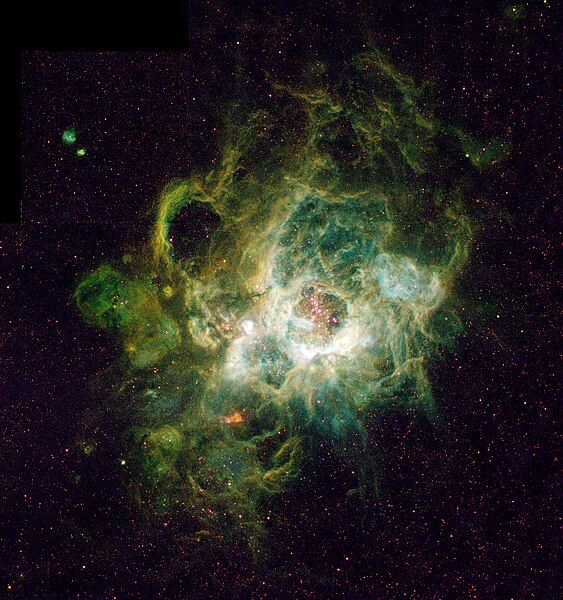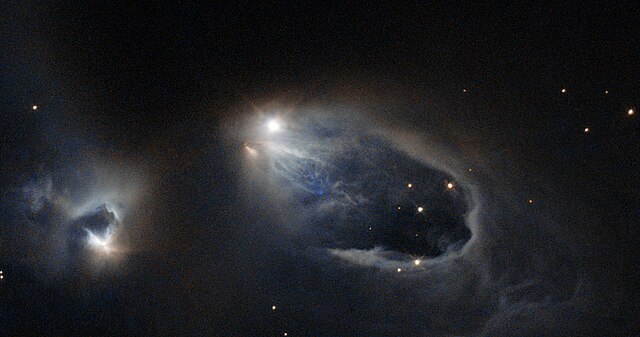The Orion Nebula is a diffuse nebula situated in the Milky Way, being south of Orion's Belt in the constellation of Orion,[b] and is known as the middle "star" in the "sword" of Orion. It is one of the brightest nebulae and is visible to the naked eye in the night sky with apparent magnitude 4.0. It is 1,344 ± 20 light-years (412.1 ± 6.1 pc) away and is the closest region of massive star formation to Earth. The M42 nebula is estimated to be 24 light-years across. It has a mass of about 2,000 times that of the Sun. Older texts frequently refer to the Orion Nebula as the Great Nebula in Orion or the Great Orion Nebula.
The entire Orion Nebula in a composite image of visible light and infrared; taken by Hubble Space Telescope in 2006
The constellation of Orion with the Orion Nebula (lower middle)
Messier's drawing of the Orion Nebula in his 1771 memoir, Mémoires de l'Académie Royale
Henry Draper's 1880 photograph of the Orion Nebula, the first ever taken.
A nebula is a distinct luminescent part of interstellar medium, which can consist of ionized, neutral, or molecular hydrogen and also cosmic dust. Nebulae are often star-forming regions, such as in the "Pillars of Creation" in the Eagle Nebula. In these regions, the formations of gas, dust, and other materials "clump" together to form denser regions, which attract further matter and eventually become dense enough to form stars. The remaining material is then thought to form planets and other planetary system objects.
True color image of the Trifid Nebula, showing complex gas and plasma structure
Portion of the Carina Nebula
NGC 604, a nebula in the Triangulum Galaxy
Herbig–Haro HH 161 and HH 164.








